In earlier posts, Alin announced his discovery of several previously unidentified fragments of the Fayumic New Testament. These discoveries are particularly exciting for those of us involved in the textual criticism of the New Testament.
 In 1874, the Bishop of Durham, Joseph Lightfoot, published an essay in which he argued for the high value of the Coptic New Testament for research on the earliest Greek text (in Scrivener, Introduction to the Criticism of the New Testament). Lightfoot argued for the priority of three early translations in Greek New Testament textual criticism: the Latin, Syriac and Coptic. I refer to these as the holy trinity of the early versions.
In 1874, the Bishop of Durham, Joseph Lightfoot, published an essay in which he argued for the high value of the Coptic New Testament for research on the earliest Greek text (in Scrivener, Introduction to the Criticism of the New Testament). Lightfoot argued for the priority of three early translations in Greek New Testament textual criticism: the Latin, Syriac and Coptic. I refer to these as the holy trinity of the early versions.
By Coptic, Lightfoot meant Bohairic, since witnesses to this dialect had been widely available to scholars since the first printed edition in 1711 by Wilkins. Within 50 years of Lightfoot’s publication, interest in the contents of the White Monastery library and elsewhere (especially Hamuli and later Nag Hammadi) turned the spotlight to Sahidic. Sahidic manuscripts were earlier than Bohairic, dating often from the first millenium, while Bohairic manuscripts dated typically from the thirteenth to nineteenth centuries. There are naturally exceptions to both generalizations.
Sahidic and Bohairic were far from the only Coptic dialects employed in New Testament translations. Scholars from the University of Birmingham (England) are currently preparing a critical edition of John’s gospel which will offer the most thorough reconstruction of this Greek text produced in the modern era. Hans Förster and Karlheinz Schüssler are collaborating to create a new critical edition of the Sahidic tradition. I am working with some collaborators to produce new transcriptions of some of the minor dialects which are present in John (Brice Jones [Middle Egyptian], Elina Perttilä [Achmimic], Alin Suciu [Fayumic “B”]). Below, I have listed the dialects of John extant today. Asterisks indicate those dialects which have been transcribed digitally:
Achmimic*
Bohairic
Early Bohairic
Fayumic*
Lycopolitan
Middle Egyptian*
Middle Egyptian Fayumic*
Sahidic*
The Middle Egyptian has never before been published. The Middle Egyptian Fayumic was published, although extensive sections were ignored. The Lycopolitan, Early Bohairic and Classical Bohairic were not covered.
Unfortunately, time and circumstance prevent the edition of a few important texts here. I invite readers to review and offer corrections for these transcriptions which are freely available online with images:
for the IGNTP manuscripts page, click here. The list of Coptic manuscripts edited is available here.
For individual transcriptions check the following links:
ac 1 : www.iohannes.com/XML/ac1.xml
cw 1 : www.iohannes.com/XML/cw1.xml
mae 5 : www.iohannes.com/XML/mae5.xml
fa 6 : www.iohannes.com/XML/fa6.xml
fa 6b : www.iohannes.com/XML/fa6b.xml
fa 7 : www.iohannes.com/XML/fa7.xml
fa 15 : www.iohannes.com/XML/fa15.xml
fa 16 : www.iohannes.com/XML/fa16.xml
fa 17 : www.iohannes.com/XML/fa17.xml
fa 18 : www.iohannes.com/XML/fa18.xml
fa 19 : www.iohannes.com/XML/fa19.xml
fa 20 : www.iohannes.com/XML/fa20.xml
fa 21 : www.iohannes.com/XML/fa21.xml
fa 22 : www.iohannes.com/XML/fa22.xml









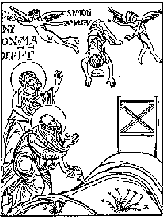




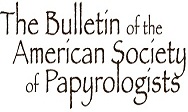
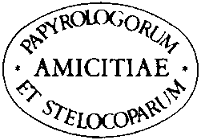
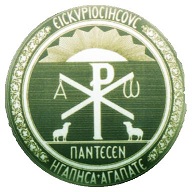





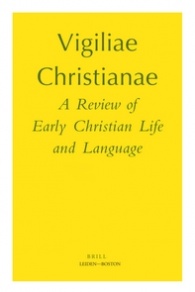






Christian,
Interesting work. I’d never even heard of the Lycopolitan version before. Is there an extant Gospels-text for that, or is only John extant?
What would you say is the most likely production-date for P.Palau Rib. Inv. Nr. 182 (the Sahidic MS in which Mark ends at 16:8)? Is there anything at all in English that describes this MS in detail?
Yours in Christ,
James Snapp, Jr.
Dear James,
The Lycopolitan codex which is now in the Cambridge University Library contains only John’s gospel. I can not think of any other Lycopolitan (=Subachmimic) gospel manuscripts, although there is a second smaller witness to Lycopolitan John in the Chester Beatty Library.
I hope to have my PhD dissertation submitted for publication with De Gruyter by this summer, and therein I argue that the date for the Barcelona Sahidic gospels manuscript is uncertain. I reject the paleographic and dialectal evidence held by Quecke, Orlandi and others. The Sahidic text form shares peculiarities with a manuscript with a colophon indicating a the ninth century origin. I think that the Barcelona manuscript could date anywhere from the 4th to 10th centuries (=who knows?). The best publication is the German edition by Quecke, and there is also a review by Tito Orlandi.
Orlandi, Tito. “Review of Quecke, Das Lukasevangelium Saïdisch: Text Der Handschrift PPalau Rib. Inv.-Nr. 181 Mit Den Varianten Der Handschrift M 569.” Studia Papyrologica 17, no. 2 (1978): 118–121.
———. “Review of Quecke, Das Markusevangelium Saidisch: Text Der Handschrift PPalau Rib. Inv.-Nr. 182 Mit Den Varianten Der Handschrift M569.” Studia Papyrologica 12, no. 2 (1973): 105–109.
Quecke, Hans, ed. Das Markusevangelium Saidisch: Text Der Handschrift PPalau Rib. Inv.-Nr. 182 Mit Den Varianten Der Handschrift M569. Papyrologica Castroctaviana 4. Barcelona: Pontificia Università Gregoriana, 1972.
Christian,
Please share this data-morsel over at the textualcriticism list!
Yours in Christ,
James Snapp, Jr.
Dear Sirs
Thank you very much for these valuable information and valuable links of the Mss.
About the Ms. Fa 15, I tried to read its words, but I could not recognize some of the letters.
I wrote what I could recognize, and I uploaded my trial, to ask you about it. It is in this link:-
https://www.4shared.com/s/fYcEEXWbFei
+ In the 16th line (the left column), I could not be sure of the letter before the last two letters; “pe”!
Is it “M”, please?
Many thanks in advance.
Yours
Makram Zaki Shenouda Guendi (Makram Guendi)
Of course they use: “shwp”, as well as: “shwpi”, as alternatives.